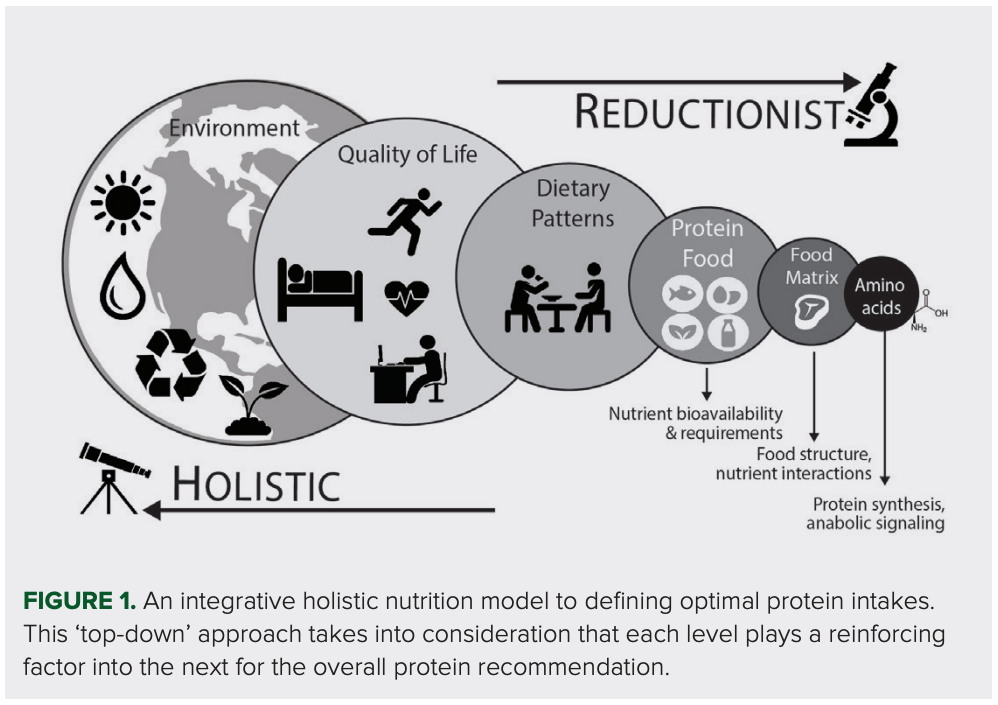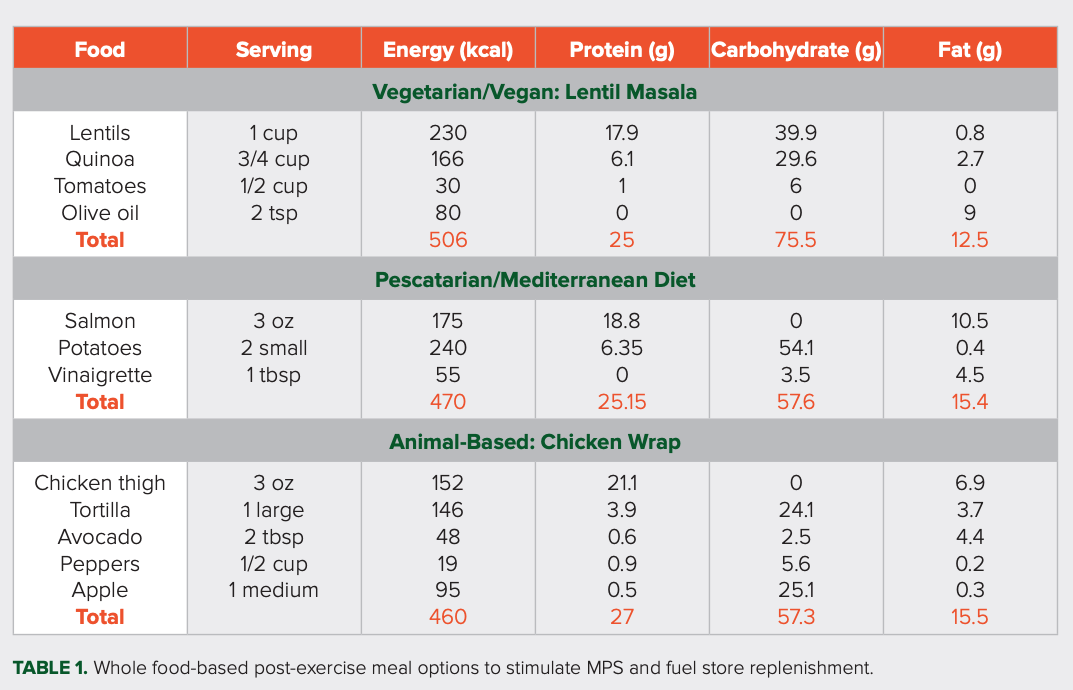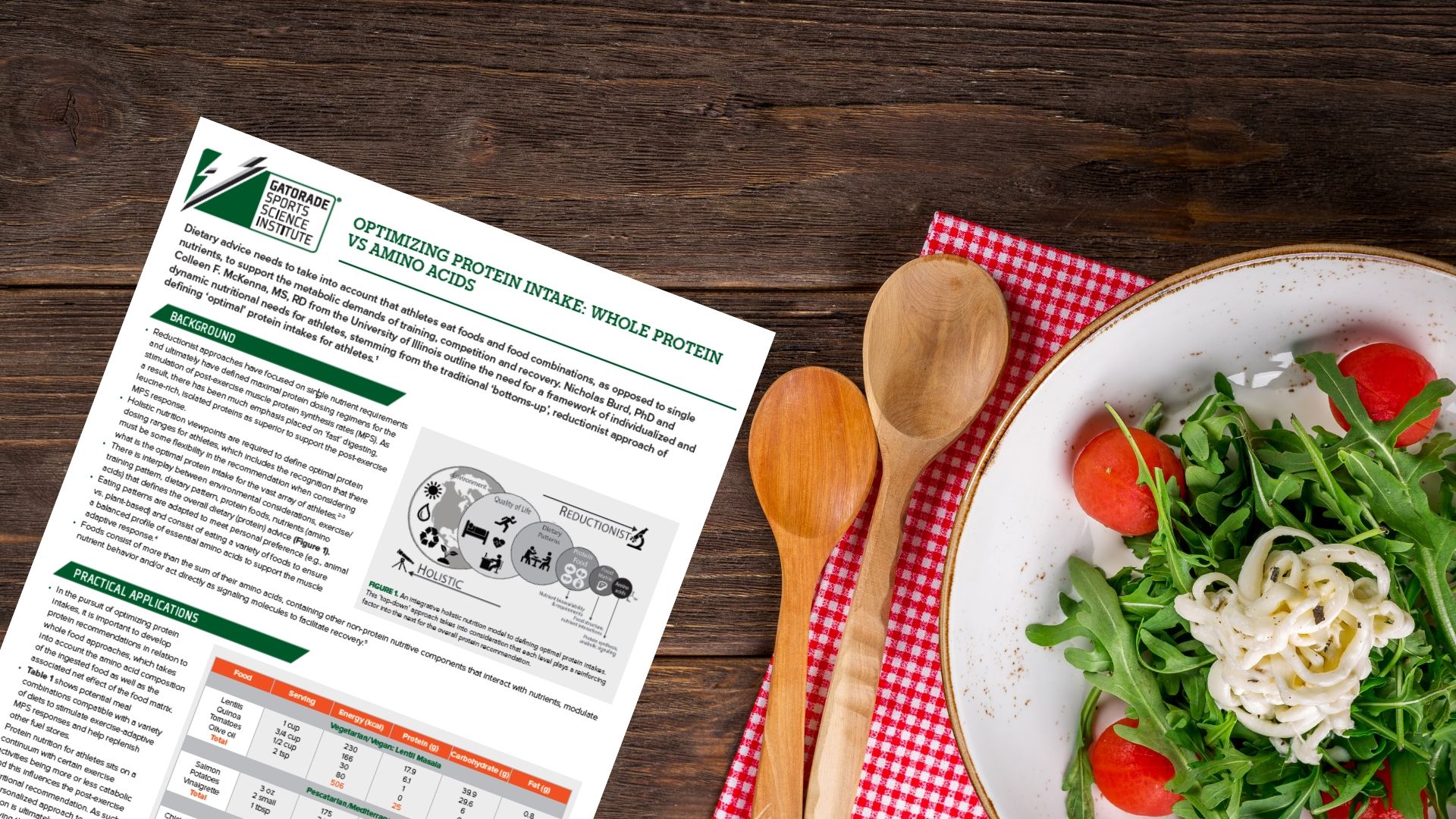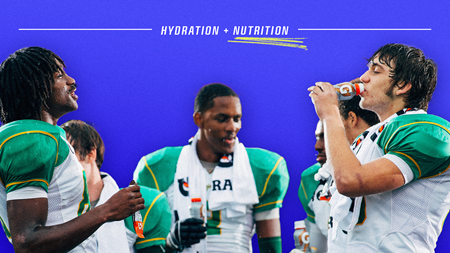Dietary advice needs to take into account that athletes eat foods and food combinations, as opposed to single nutrients, to support the metabolic demands of training, competition and recovery. Nicholas Burd, PhD and Colleen F. McKenna, MS, RD from the University of Illinois outline the need for a framework of individualized and dynamic nutritional needs for athletes, stemming from the traditional ‘bottoms-up’, reductionist approach of defining ‘optimal’ protein intakes for athletes.1
Background
Reductionist approaches have focused on single nutrient requirements and ultimately have defined maximal protein dosing regimens for the stimulation of post-exercise muscle protein synthesis rates (MPS). As a result, there has been much emphasis placed on ‘fast’ digesting, leucine-rich, isolated proteins as superior to support the post-exercise MPS response.
Holistic nutrition viewpoints are required to define optimal protein dosing ranges for athletes, which includes the recognition that there must be some flexibility in the recommendation when considering what is the optimal protein intake for the vast array of athletes.2-3
There is interplay between environmental considerations, exercise/training pattern, dietary pattern, protein foods, nutrients (amino acids) that defines the overall dietary (protein) advice (Figure 1).
Eating patterns are adapted to meet personal preference (e.g., animal vs. plant-based) and consist of eating a variety of foods to ensure a balanced profile of essential amino acids to support the muscle adaptive response.4
Foods consist of more than the sum of their amino acids, containing other non-protein nutritive components that interact with nutrients, modulate nutrient behavior and/or act directly as signaling molecules to facilitate recovery.5

Practical Applications
In the pursuit of optimizing protein intakes, it is important to develop protein recommendations in relation to whole food approaches, which take into account the amino acid composition of the ingested food as well as the associated net effect of the food matrix.
Table 1 shows potential meal combinations compatible with a variety of diets to stimulate exercise-adaptive MPS responses and help replenish other fuel stores.
Protein nutrition for athletes sits on a continuum with certain exercise activities being more or less catabolic and this influences the post-exercise nutritional recommendation. As such, a personalized approach to protein nutrition is ultimately necessary when identifying the most appropriate recovery option for an athlete or team.


- Stellingwerff T, Morton JP, and Burke LM. A Framework for Periodized Nutrition for Athletics. International journal of sport nutrition and exercise metabolism 1-29, 2019.
- Fardet A, and Rock E. Toward a new philosophy of preventive nutrition: from a reductionist to a holistic paradigm to improve nutritional recommendations. Advances in nutrition 5: 430-446, 2014.
- Jacobs DR, and Tapsell LC. Food, Not Nutrients, Is the Fundamental Unit in Nutrition. Nutrition reviews 65: 439-450, 2007.
- van Vliet S, Burd NA, and van Loon LJ. The Skeletal Muscle Anabolic Response to Plant- versus Animal-Based Protein Consumption. The Journal of nutrition 145: 1981-1991, 2015.
- Burd NA, Beals JW, Martinez IG, Salvador AF, and Skinner SK. Food-First Approach to Enhance the Regulation of Post-exercise Skeletal Muscle Protein Synthesis and Remodeling. Sports medicine 49: 59-68, 2019.








